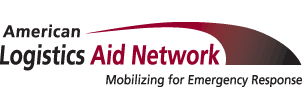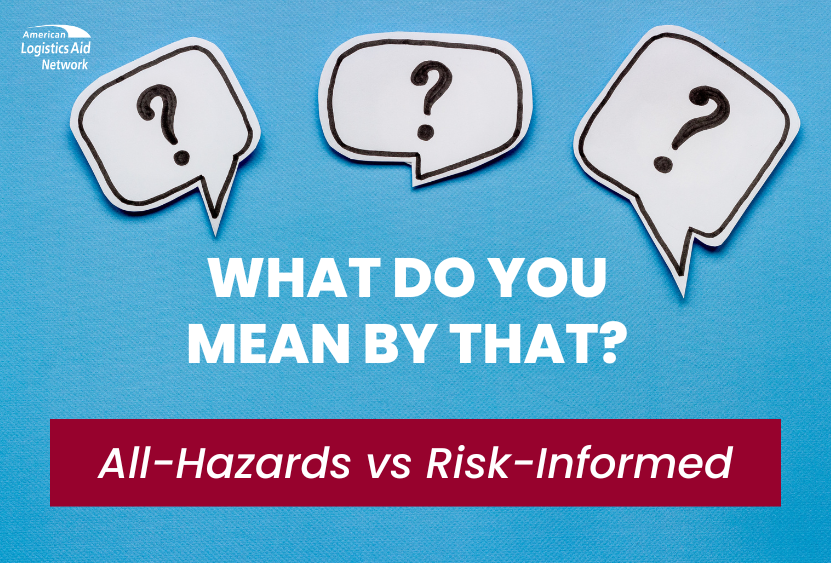Each year, dictionaries add numerous new expressions and countless new definitions for existing words.
Non-profit and supply chain lexicons are also evolving, which is why we’re introducing this “vocab”solutely fabulous new blog feature – and kicking it off with a closer look at two of the biggest disaster preparation terms being bandied about today.
Lately I’ve been hearing a lot of discussion about “all-hazards” and “risk-informed” approaches to disaster management? What’s the big difference?
Great question – and one that probably stems from the language used in a presidential executive order last month.
Like its name suggests, all-hazards is broad and encompassing. It approaches disaster management with an eye toward the full spectrum of emergencies and disasters that could possibly occur, what their consequences are, and where common capacity exists. Ultimately it allows organizations to prepare general capabilities that can be used to assist with relief and response after any disaster, regardless of cause.
By contrast, risk-informed prioritizes a few specific types of events and their unique characteristics. It emphasizes preparedness activities based on certain disasters’ potential likelihood of occurring in a particular area and what those disasters’ specific impacts might be. (For example, if you live in Iowa, you’re far more likely to get hit by a tornado than you are to experience a tsunami). As a result, it allows organizations to tailor their relief planning efforts towards the specific kinds of tools, products and supplies that are most relevant to their location, community or activities.
Why is more emphasis being placed on risk-informed?
While this may look like a significant disaster management refocus to some people, it’s really more of a semantic change – one that more accurately reflects how today’s government entities are being called upon to perform and prioritize their emergency management work.
Over the past several years, these government entities have been dealing with a shrinking pool of federal pre-disaster grant funding that has made the competition for grants increasingly competitive. Meanwhile, emergency management programs have been engaged in ongoing efforts to refine the risk and preparedness assessment process while emergency managers have been tasked with handling many human services emergencies that previously weren’t part of their job descriptions.
The end result has been an increased need to emphasize what can be accomplished with the least amount of funding for the highest-risk scenarios – also known as a risk-informed approach.
Does this mean that the all-hazards approach will be riding off into the sunset?
Not at all. The all-hazards approach will always be a necessary skillset for emergency managers, and it’s likely to become even more so as disasters continue to increase in frequency and severity.
All-hazards is also the approach we usually recommend for nonprofits, because unless you’re hit with a Black Swan event like WKRP’s live turkey drop, the resources you’ll need to keep your organization operating and to serve your community (such as finding a way to restore power) will usually be 99% the same.
So which approach is better?
They both have their place – and their advocates.
However, regardless of where you sit politically or which approach you prefer, this most recent Executive Order and its emphasis on risk-informed represents an opportunity to revisit your own organizational priorities with a clearer, more realistic view of the limitations of local and state emergency management programs.

